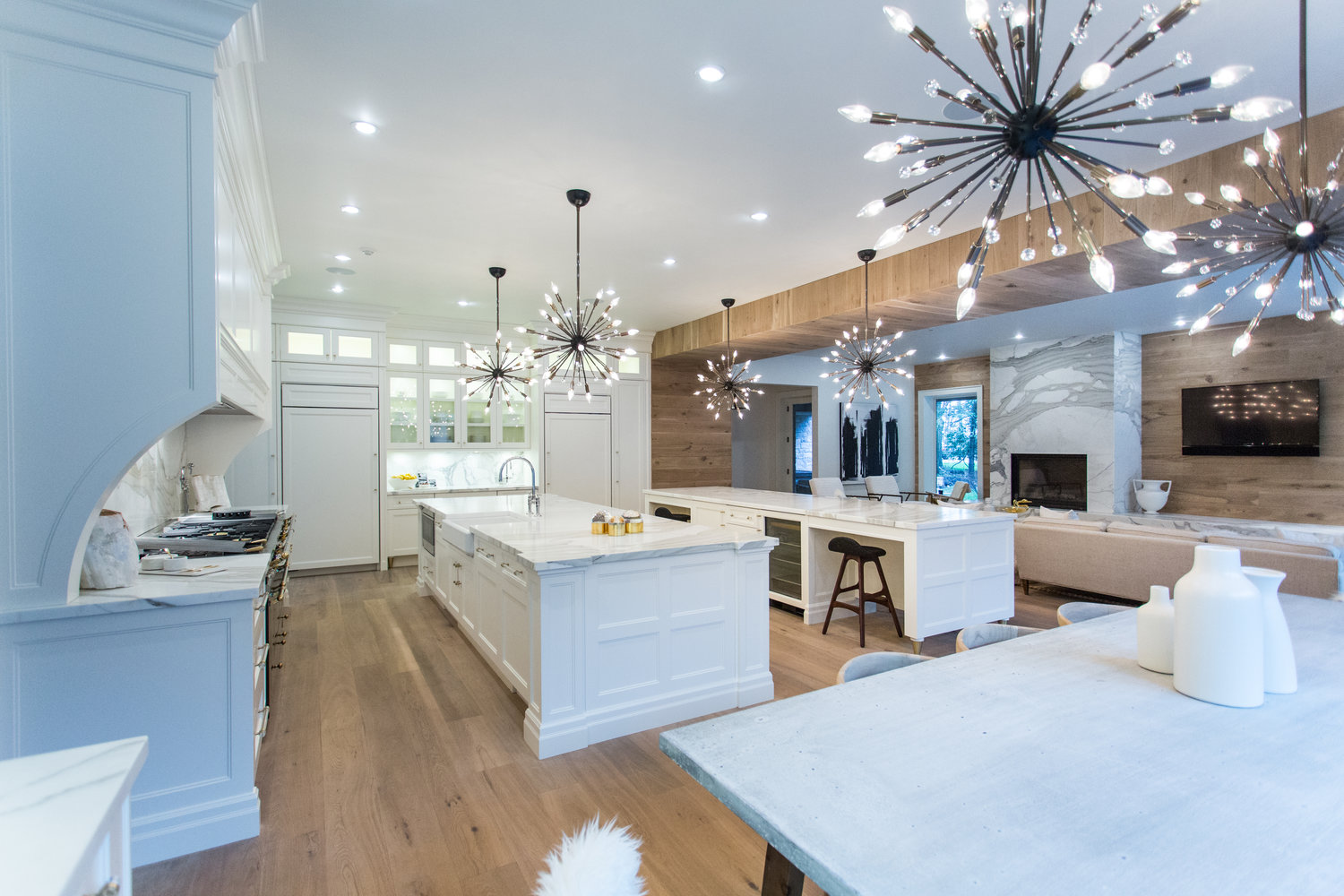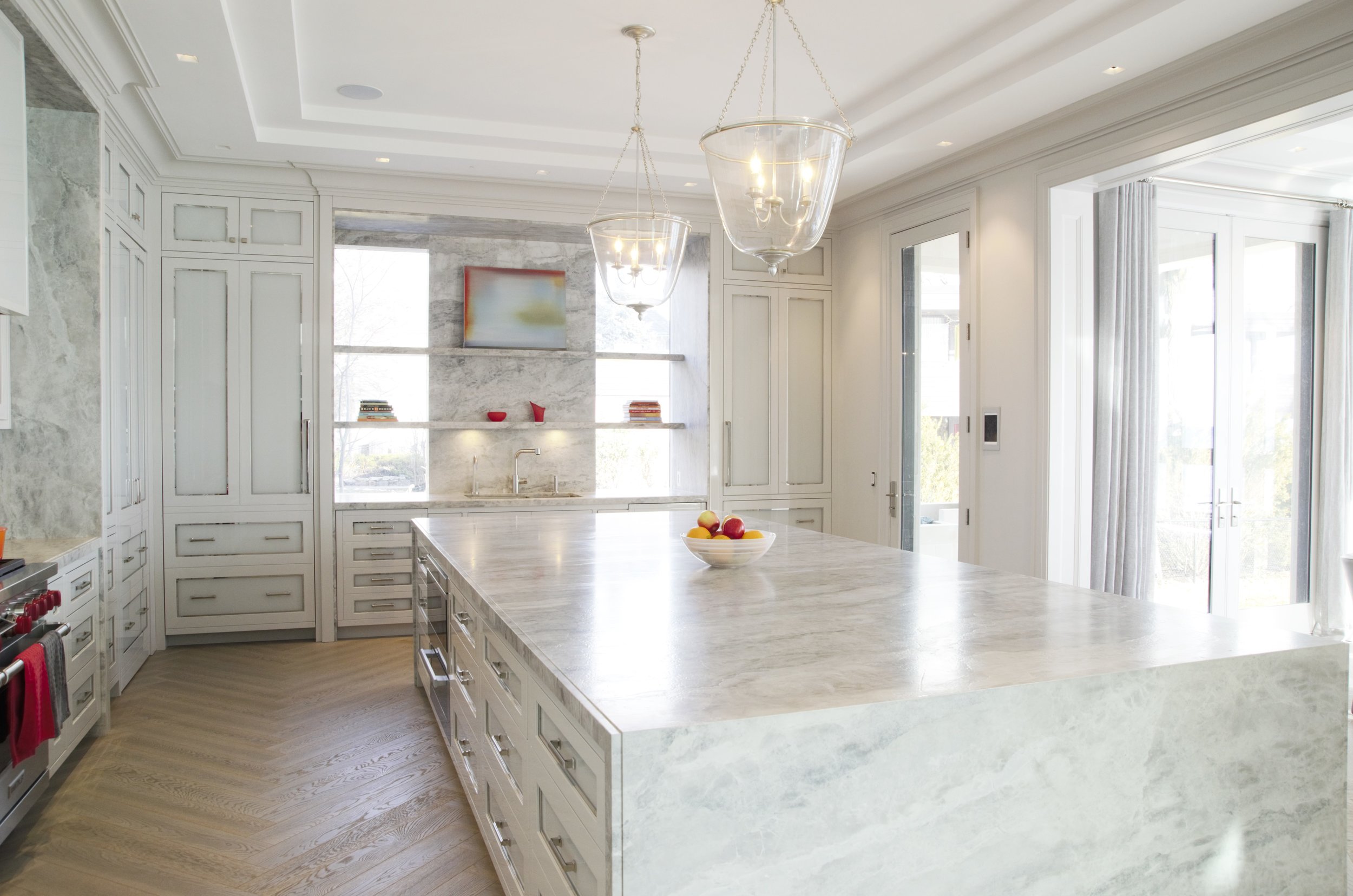As seen in October Woodworking Canada Magazine:
Top Notch Cabinets has been designing and building beautiful interiors since 1991 and Rob Altiparmakyan, who owns and operates the company along with his wife Valerie Thompson, says the key to their success has been technology.
Well, of course that’s not all.
It takes all the usual attributes to get a new company off the ground successfully. Hard work, passion, dedication and commitment, but Altiparmakyan says he firmly believes once you’ve made the decision to make a go of it, using technology is the key to success.
“We started the company as a temporary gig. It was meant to be a temporary thing and me and my girlfriend and now wife (Valerie Thompson, Top Notch’s CEO/Designer), got a small business start-up loan from the bank to start it,” Altiparmakyan said.
“I was working in construction, but in the late ‘80s it just dried up so in ’91, the contractor I was working for was slow, and I had a couple of people ask me to do some trim work for them and build them some cabinets and next thing you know I am building small pieces of furniture.
“So we decided to try that for a while and we started the business together and we are still married,” he says with a laugh.
Altiparmakyan’s background is Armenian, but Turkey was home until he was about 14, and he went to school in the UK, because his mom is English.
His father owned a leather tannery in Istanbul, Turkey and Altiparmakyan says it was there that he first learned that technology is important for your business
“My dad had this big factory and growing up I spent a couple of summers working for him. He liked equipment and he always invested in technology and it served him well.
“I learned that from him and when we got this business going and when it started to grow my dad reminded me again that technology is crucial and that having the right equipment is important for me to succeed. So I followed his advice.
Technology is key
“I had studied engineering for two years and the best thing I got out of that is that I learned how to use AutoCAD.
“So when we started the company, I bought AutoCAD right away. It was the first thing I bought and it made all the difference and we are still using it today. It has been a staple in this business since ‘92. And I continue to use it because we are very detailed and the presentation drawings it lets us create are impressive and I can’t get that from any other software.
“And we never stopped, we always invested in more and better technology because it serves us well,” Altiparmakyan says.
“There were about a dozen cabinet shops here on Spears Road (sic. In Oakville, just south of Toronto) and the ones that didn’t adapt are gone now.”
“Technology has always been a big part of the growth of this business. We were early adapters of software; we were early adopters of CNC. I just think having the right equipment is important. It helps you stay competitive. It’s hard to find skilled labour and you know when you find skilled labour you don’t really want them doing a task that a machine could do easier, quicker and more accurately.
“That’s the thinking behind that and if you look at Europe they are probably 10 years ahead of us when it comes to adopting technology, and they are doing it right.
And Altiparmakyan is putting his money where his mouth is.
Right now he is investing more than a million dollars into new technology to grow the business, to make it better, more productive and more efficient and all without expanding its footprint.
“We’ve got two issues here right now. We want to increase our production capacity, but it’s hard to find skilled people and it’s hard to increase our square footage.
“Another push that we are trying to do is to complete projects faster and rather than have about 20 on the go, we have a maximum of 10 at any given time.
It’s hard to increase our footprint, square footage, so how can we produce more in the space we have, how can be better organizing our workflow.
His plan to tackle these issues is to use new software to manage inventory and materials and invest in new machinery to do more in the space they have. It will take about six months to get there and a lot of work, but it will be worth it in the end.
He just signed a deal for five new machines with Biesse. A CNC Rover B 5-axis with automated labelling and automated loading and off-loading, a Winstore, an automated panel storage and retrieval magazine, two
automated sanders and a vertical CNC.
“So our CNC is a production machine, it loads and unloads itself, attaches labels and it’s running all the time.
It is counter productive to stop that machine to re-cut a part that was damaged, scratched or missing. So we decided, you know what, we are going to buy a vertical machine with a small footprint which will just deal with re-cuts.
Another benefit of that machine is that it will also automate the process of drilling our hinge holes. When I buy machines, I try to buy them with as many options as possible. So the new CNC is also a five-axis machine with the ability to cut compound mitres, so that will help them with their hoods.
It’s a big investment, but expansion was not really an option for them.
Altiparmakyan talked to the Town of Oakville to see if he could put a 4,000 sq. ft. addition on the back. But that was a non-starter. To build that addition would have cost about $120,000, but the town wanted $80,000 for development charges. I just didn’t make sense so they invested in technology instead.
“So now our flow through it going to be much quicker, which means we need less space in the shop. In addition, they’ve also just added new purchasing and inventory software.”
Altiparmakyan says the business is really quite complex and it takes a lot to keep all the proverbial balls in the air.
“If you look at it, we are a manufacturer, we are a retailer, we are a contractor because we have guys on site (installing), and we are a custom designer because everything is made to order. It’s a complicated process, it’s not like the guy down the street selling skis who just buys them and sells them. We do a lot more.
“And the technology and the software have really helped us manage it all.
For example we use Cabinet Vision to build our boxes, so that does all our boxes, our hardware, our drawer sizes. We take it from AutoCAD and move it across. It will then spit out a list of all the different materials we will need for a particular job. That list gets imported into our purchasing software, which then creates a manufacturing order. So we know what we’ll need for next weeks production. So we are always current and we’ll know that we will need 10 sheets of something next week, that we have five sheets in stock so we need to order another five.”
Along with the investment in new technology and the software that runs it, Altiparmakyan says their other goal is to reduce their inventory by about 40 per cent. That will free up roughly $220,000 to $260,000 that’s currently tied up in inventory, but more importantly it will free up shop space.
“Our goal is to have material come in as we are about to need it.”
Another reason for the Winstore is that we have too many material skews.
What’s happened in the past five years is that the European melamines have gotten really popular and we are using a lot of that.
Ten years ago clients just had a handful of domestic melamine to pick from. The problem now is that every time I turn around there is a new rack upfront with more choices. So now, instead of trying to manage something like 50 skews of material and sheet goods, we are trying to manage a couple hundred.
But we are a custom shop, so we need to offer variety.
Also, all the European melamines are coming in 7 by 9 feet and our older machine will not handle that size.
We have a 5x12 machine, so our yield was terrible. So part of the reason we are going for a new CNC and a Winstore is to address these issues as well. It’s because we want to be able to cut the bigger sheets, so we are getting a 7x10 CNC.
Top Notch Cabinets is also using Biesse’s bSolid to machine custom parts “and we’ll use it to machine our doors, and anything else that is custom. We take it from AutoCAD and transfer it across, it works great.”
“So by bringing in the Biesse machine, we are also eliminating two other pieces of software.”
Altiparmakyan says Biesse has done a lot of technology work in the last few years and that is important to him.
“There are a lot of great machines out there, but I think a machine is only as good as the software that runs it, so they have done a really good job on that end.
“And they have also been really good at supporting us, which is huge and they are local. So when we have an issue, we call them and they say, “OK, we have a tech driving by there so he will pop in and help.”
Find your own solution
But this is Top Notch Cabinets’ solution and what works for them doesn’t necessarily work for everyone. Every company has different needs, and while Altiparmakyan is certain
he has found the right solutions for
his business, his recommendation
to everyone else is to make sure
they do their homework.
“If you want to implement technology, it also means that you have to be willing to take certain risks to get there.
Sure, do your homework, do the research, see what other shops are using and talk to people. But in the end it comes down to what works for you.”
Altiparmakyan says he has tried a lot of software over the years and “we’ve crashed and burned many times, but that is just the way it is. You have to be careful, but at the same time you can’t be afraid of it and not do anything because that’s when you fall behind.
He also says whether or not a shop adopts technology depends on what the owner believes in and has experienced. Yes, it requires a certain level of commitment, but he firmly believes that if a shop were to spend the time and money – and it doesn’t have to be a huge investment, the important part is to get started, baby steps – they will see a return on that investment of time and money.
For him it was a process. He started with software and simple machines, but he continued to make improvements.
“I read a lot about this business, I am always looking for better and quicker ways of doing stuff, that is part of my fabric and I seem to be one of these guys that seems to problem solve well, which is important in this business.
“My father was very influential for showing and teaching me and my mom always said you can do anything if you put your mind to it. They are very encouraging parents. That’s why I have three siblings who are also in business for themselves.
In fact, his family history shows a strong entrepreneurial spirit.
Altiparmakyan says as far as back as they can trace on his dad’s side of the family, every person has worked for themselves since the late 1800’s, “which is crazy. It’s not for everybody, a lot of people shy away from it, it’s a lot of risk and a lot of stress.”
For anyone running a small to medium shop, he recommends a similar approach.
“So I would say software. I think it has to start with software, something that helps you track what you are doing.
“Design software has been the key for me and I think if you are not already doing it, you should definitely invest in that.
“Also, it is important that if you are looking at new machines, make sure that you buy from a manufacturer that has good machine software.
“And for me personally, my hardest thing with technology is getting the guys to buy into it.”
People often worry that a machine could replace them, but that has not been the case here. In fact more technology has never meant layoffs at Top Notch Cabinets. It just meant increased capacity and more efficient production and not having to hire additional staff.
“All the people that were here are still here.”
“But just as an example, take that new Cefla finishing line, I bought it about a year ago (so there is another investment in technology and they are about to add a drying tunnel as well), and it’s a great machine. When we first got it, it was used for a bit then it wasn’t, then came complaints that it wasn’t doing a good job, that it wasn’t doing this or that.
“So I called my suppliers and asked them to show the guys how to use it and start using it more.
“We started with priming, I said no more priming in the booths, and we did that. Then we added topcoats and it’s pretty good now, but I think we can run it a lot more still and we will get there.”
“So now I am looking at whether we still need two booths and two guys or whether I take the one guy out of his booth and tell him to run the machine all day long.
“We also tape up all the backs of our doors to eliminate overspray and with the machine we don’t have to do that anymore. We were going through $1,200 of masking tape every month, and we are also saving the time it took to do that.
Sanding and finishing aren’t the greatest jobs in a shop Altiparmakyan says, and by adding these machines they are cleaning that up.
We are committing a million-plus dollars right here, but you know, I am making that investment because it’s the right thing for the company, for growth and to stay competitive.
“I am lucky, we have great people here, there are many longer term employees, they do great work, they are loyal and they help out, they step up to the plate when we’re behind,” he says
“We have been successful because we are a great team and because
we use the right tools for the job.
“Take Val, she is really good at what she does, she is good with clients, a great designer and she is not a hard sales person who pushes people. And she loves what she does.
“And I love what I do in the back, most of the time (he laughs), and it also helps that I have done every job in the back. So if the CNC guy doesn’t show up, I can run the machine. Not as well as him, but I can still run it.
“There is no task in here I can’t do if I had to. And the respect is greater because they know I’ve done it.”
Go Lean
Last but not least, Altiparmakyan encourages everyone to implement Lean.
“That really impressed me when I first came across it. I started reading about it and then I talked to some people and immediately started to implement it.
“It wasn’t easy to get everyone in the shop to get started, but it is working. It is a productive way of thinking. It’s good for everybody and it’s not hard to get started and it’s cheap. You can’t afford not to do it.
“We went around the shop and made small improvements here and there. It is a process, but it’s not hard, it just take commitment and a little time until everybody gets on board.
I didn’t want to preach and push everybody, but we got it started, baby steps, and I think by now everyone is seeing the improvements.”
Altiparmakyan says all the little things, like having the right tools in the right place rather than having to walk around looking for them, will add up.
“If you add them all up, these small improvements everywhere make a huge difference.”
“We get so used to doing something a certain way that it is difficult to see what you are doing wrong or recognize ways to improve.”
Altiparmakyan is also not shy about asking for help, which is why he recently asked one of his suppliers to walk through the shop and point out things they were doing wrong. There were a couple of areas that needed improvements and everyone in the shop agreed the changes made things better, he said.
“We are really busy right now, we are working on multi-million dollar condos here in Oakville and I am being asked to bid on jobs in the Caymans and I’m working on a job in Aruba right now,” he says.
“That’s great, and we are very fortunate to be in that position, but it also means a lot of pressure.
“Getting the work seems to be quite easy for us right now and that’s a great position to be in, but the challenge is to get all of it done. And that’s another reason for investing heavily in more and better equipment.
We really have to plan ahead.
It pays to invest
Altiparmakyan says the math for this latest investment is that they are spending about $1.2 million on new equipment, which will give them an increase in the volume they can produce. On top of that is the fact that they don’t have to hire any new people to achieve those production increases.
“So we should be able to pay for this new equipment in about a year and a half. Right now finishing is our biggest bottleneck, and by adding the two sanders and maximizing the use of our finishing line we can be about 50 per cent more productive.
“That, along with the other changes we are making, will make us a better company.”
About Top Notch Cabinets
Top Notch Cabinets has been designing beautiful interiors since 1991 and the company offers a completely customizable experience that lets their clients turn their imagination into reality. Powered by a team of handpicked designers, technicians, cabinetmakers, finishers and installers, they can handle any project, no matter the shape or size. Kitchens. Closets. Living rooms. Bathrooms. Everything in between.
The company operates from a 25,000 sq. ft facility and 90 per cent of the work they do is with builders and renovations.
Click here to see the original story from October Woodworking Canada.


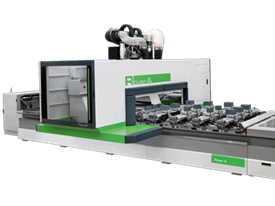
.png)
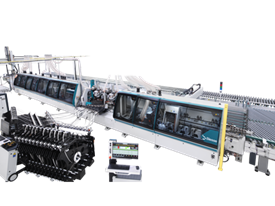
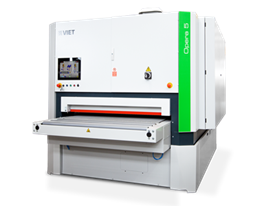
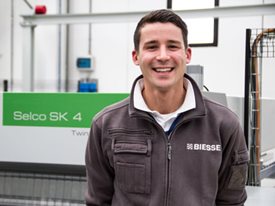
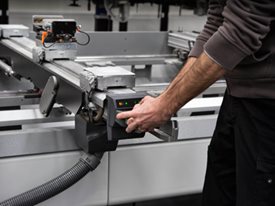


 Worldwide
Worldwide
 Italia
Italia
 United Kingdom
United Kingdom
 Россия
Россия
 France
France
 中国
中国
 Asia
Asia
 Deutschland
Deutschland
 España
España
 Schweiz
Schweiz
 North America
North America
 India
India
 Australia & New Zealand
Australia & New Zealand
 Türkiye Cumhuriyeti
Türkiye Cumhuriyeti
 Middle East
Middle East
 Brasil
Brasil
